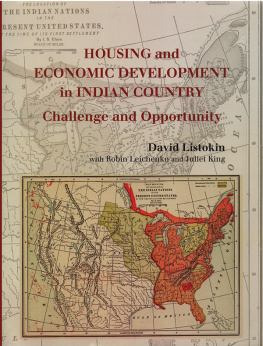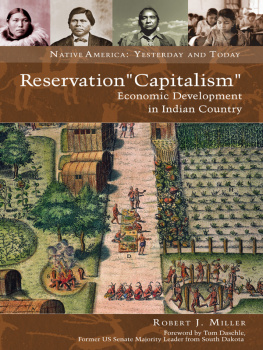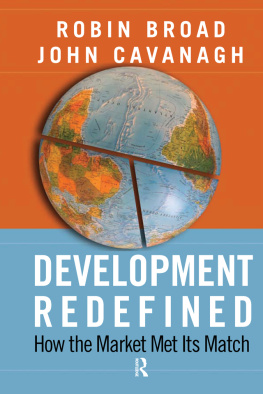Robin Leichenko - Housing and Economic Development in Indian Country: Challenge and Opportunity
Here you can read online Robin Leichenko - Housing and Economic Development in Indian Country: Challenge and Opportunity full text of the book (entire story) in english for free. Download pdf and epub, get meaning, cover and reviews about this ebook. year: 2018, publisher: Routledge, genre: Politics. Description of the work, (preface) as well as reviews are available. Best literature library LitArk.com created for fans of good reading and offers a wide selection of genres:
Romance novel
Science fiction
Adventure
Detective
Science
History
Home and family
Prose
Art
Politics
Computer
Non-fiction
Religion
Business
Children
Humor
Choose a favorite category and find really read worthwhile books. Enjoy immersion in the world of imagination, feel the emotions of the characters or learn something new for yourself, make an fascinating discovery.
- Book:Housing and Economic Development in Indian Country: Challenge and Opportunity
- Author:
- Publisher:Routledge
- Genre:
- Year:2018
- Rating:4 / 5
- Favourites:Add to favourites
- Your mark:
- 80
- 1
- 2
- 3
- 4
- 5
Housing and Economic Development in Indian Country: Challenge and Opportunity: summary, description and annotation
We offer to read an annotation, description, summary or preface (depends on what the author of the book "Housing and Economic Development in Indian Country: Challenge and Opportunity" wrote himself). If you haven't found the necessary information about the book — write in the comments, we will try to find it.
Housing and Economic Development in Indian Country: Challenge and Opportunity — read online for free the complete book (whole text) full work
Below is the text of the book, divided by pages. System saving the place of the last page read, allows you to conveniently read the book "Housing and Economic Development in Indian Country: Challenge and Opportunity" online for free, without having to search again every time where you left off. Put a bookmark, and you can go to the page where you finished reading at any time.
Font size:
Interval:
Bookmark:
in Indian Country
- In 2000, approximately 895,000 Native Americans lived in Indian country, accounting for 36 percent of all Native Americans in the United States (approximately 2,476,000). An additional 608,000 Native Americans, or 25 percent of this racial group, lived near Indian country (i.e., in the remainder of the county surrounding a tribal area). Thus, about six in ten Native Americans live either on or near tribal lands. Additionally, the growth of the Native American population in Indian country (21 percent) and its environs (32 percent) during the 1990s represented some of the fastest gains of all areas of Native American settlement in the United States.
- On average, Native Americans compose only a small share of the population of Indian country. In 2000, Native Americans in tribal lands (895,000) constituted only one-sixth of the total population of Indian country, which, at 5,483,000, exceeded the population of 34 states and accounted for approximately 2 percent of the total population of the United States (281,422,000).
Font size:
Interval:
Bookmark:
Similar books «Housing and Economic Development in Indian Country: Challenge and Opportunity»
Look at similar books to Housing and Economic Development in Indian Country: Challenge and Opportunity. We have selected literature similar in name and meaning in the hope of providing readers with more options to find new, interesting, not yet read works.
Discussion, reviews of the book Housing and Economic Development in Indian Country: Challenge and Opportunity and just readers' own opinions. Leave your comments, write what you think about the work, its meaning or the main characters. Specify what exactly you liked and what you didn't like, and why you think so.






